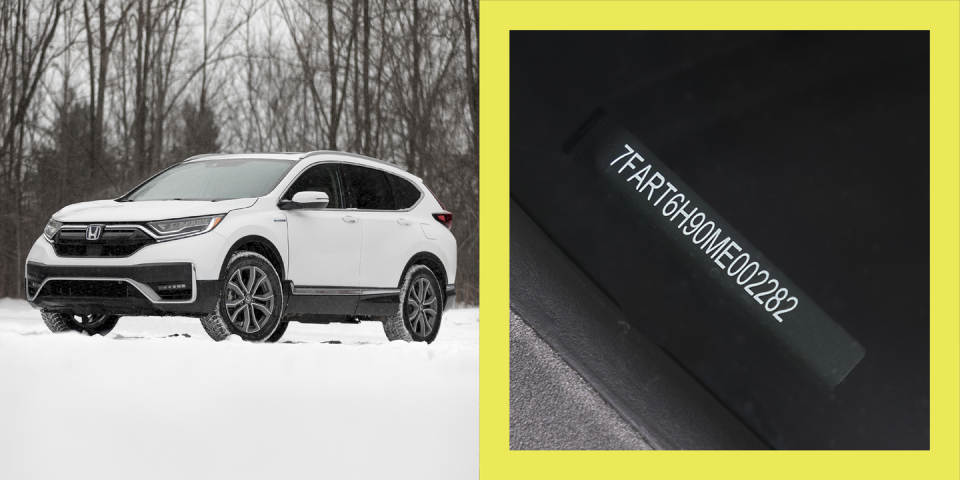Every Honda CR-V Hybrid Comes with a Fart Joke in Its VIN

We spotted this pretty amusing Vehicle Identification Number (VIN) on our long-term Honda CR-V Hybrid.
That led us to wonder, did Honda do that for fun or was it an accident? (Honda said it was the latter).
Each digit in a VIN signifies something, and here's our guide to what it all means.
Farts are funny. A car's 17-character Vehicle Identification Number (VIN) is typically anything but. Undaunted by this normally overlooked chasm in comedy, the Honda CR-V Hybrid brings the two together by sneaking "FART" into its VIN. We first noticed this a few months ago. When we were done laughing—is it funnier because it's a hybrid?—we wondered if Honda did this on purpose, and if there's any oversight preventing more nefarious four-letter words from infiltrating a VIN.
Since the 1981 model year, automakers have been required to follow the 17-character format below. The Code of Federal Regulations (CFR) 565.13 and 565.15 specify, among many, many other excruciating details, that the characters on a VIN must be at least 4 millimeters tall and in a sans-serif font. Another fun fact: the letters 'I,' 'O,' and 'Q' are never used in a VIN, to avoid confusion with '1's and '0's. Those sections of the regulation also define what goes in each position in a VIN. Using our long-term CR-V Hybrid as an example, here's what those characters mean:

The first three characters are the "world manufacturer identifier," which is assigned by the engineering group SAE International and identifies the country, automaker, and sometimes the plant in which the vehicle is built. In this case, Honda says it uses "7FA" for vehicles built in its Indiana plant. The country can often be identified by the first digit (1, 4, or 5 = U.S.; 2 = Canada; 3 = Mexico; J = Japan; L = China; S = United Kingdom, W = Germany; Z = Italy). Our CR-V was built in the U.S., but that isn't always the case for a vehicle with a leading '7'.

Characters four through eight are specific to the automaker and typically include vehicle details such as the powertrain and body style.

The ninth spot is a check digit that ensures the VIN is valid, which helps insure against fraud. It's calculated by a formula developed by the U.S. Department of Transportation.

 Yahoo Autos
Yahoo Autos 